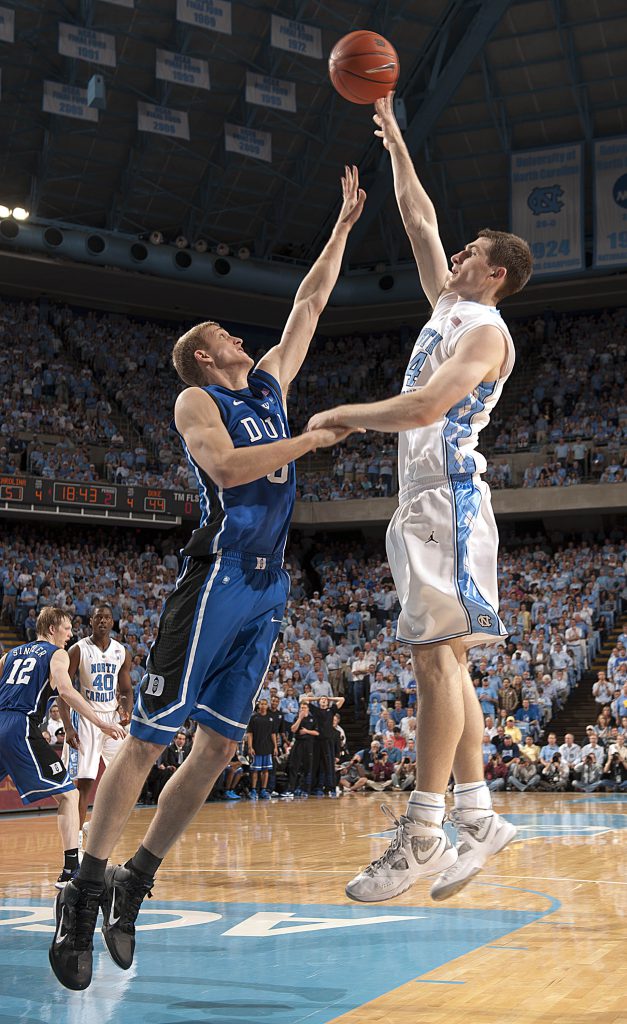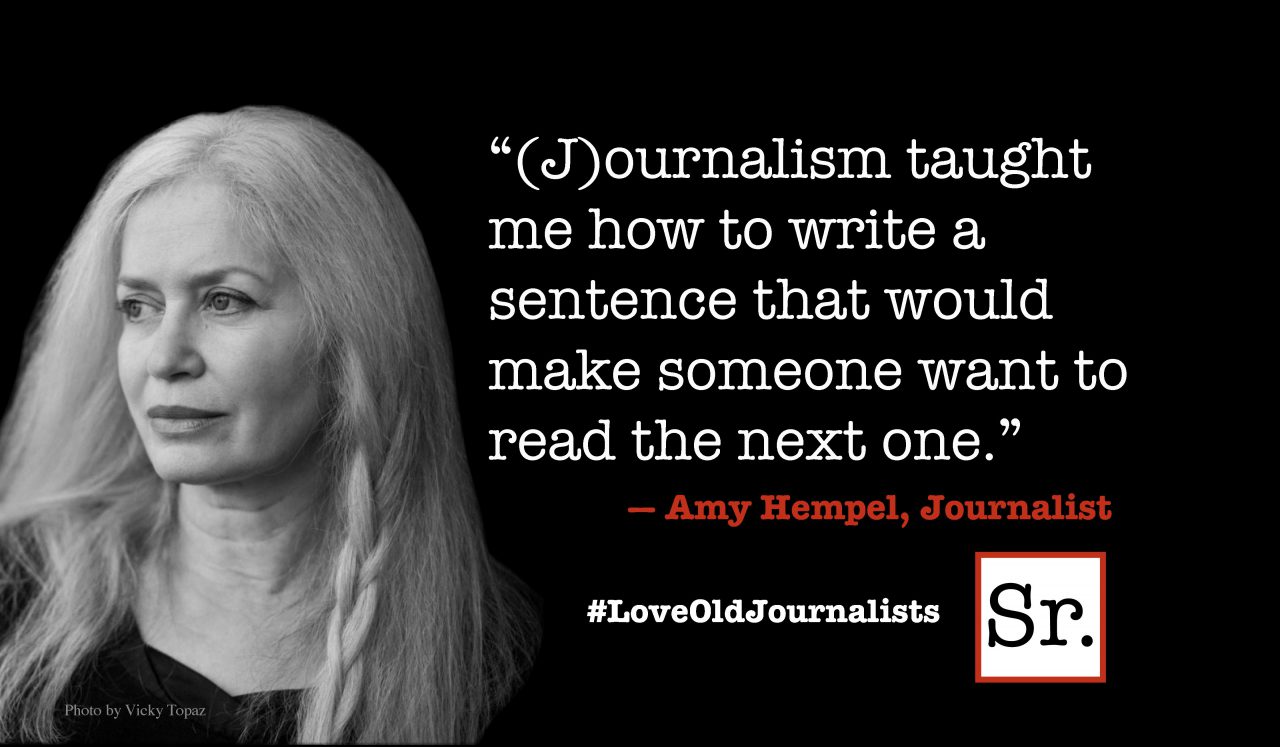When the University of North Carolina and Duke got together for their 234th basketball series game on March 3 in Durham, N.C., fan response was predictable.
Yet again, the Blue Devils and Tar Heels sent television ratings soaring, just as was the case when they played in Chapel Hill on Feb. 8.
In basketball history, collegiate or professional, the games between the neighboring schools have set a popularity standard that may never be matched.
“It’s the most predictable television product in basketball, hands down by a mile,” said ESPN icon Dick Vitale. “Duke-Carolina games push the needle like nothing else in the sport.”
That’s absolutely been the case for almost 40 years, dating back to the coaching eras of Dean Smith at Carolina and Vic Bubas at Duke in the 1960s.
But for the first time ever, both programs are approaching a coaching crossroads that almost certainly will change the rivalry dynamic.
Duke’s Mike Krzyzewski turned 65 on Feb. 13. Carolina’s Roy Williams will be 62 on Aug. 1.
Neither coach has set any sort of retirement date, but it stands to reason that there will be turnovers at the top in both camps within a few years.
At Duke, athletic director Kevin White denies dwelling in denial, but says he has no desire to ponder a time when Krzyzewski’s successor will have to be hired.
“It’s not something we’ve planned for and don’t want to have to think about for a long time to come,” White said. “How do you replace the best coach in the business?”
At Carolina, a new athletic director is in place. Richard “Bubba” Cunningham had not been to a Duke-Carolina game when he was hired from Tulsa in October.
Upon arrival, Cunningham’s most pressing issue was a football scandal that eventually ended in a three-year NCAA probation for the Tar Heels. Before the basketball season began to gain traction, Cunningham had to hire a new football coach. Larry Fedora from Southern Mississippi was brought in to assume the football duties, and there’s no doubt the status of the program will be a topic of much discussion and attention as Carolina attempts to recover from the transgressions that occurred under previous coach Butch Davis.
But eventually, the most important task of Cunningham’s professional life almost certainly will be the hunt for Williams’ successor.
The future of the Duke-Carolina rivalry popularity is something Cunningham understands will hang in the balance of the next coach.
“I’ve never seen anything quite like the series with Duke,” Cunningham. “The game atmosphere almost gives you chills. I don’t see how it could ever lose its appeal. I’d heard about it and watched the Duke-Carolina games on TV, of course. But it is one of the rare, rare games that takes on a life of its own.
• • •
There is no shortage of speculation at both schools about the future coaches.
Longtime Carolina observer Art Chansky, who has written four books on UNC basketball and one on the rivalry, believes Williams’ successor will depend primarily on Cunningham’s clout as AD and the influence exerted by the school chancellor and board of trustees when the time comes.
“My thinking is Roy will coach through the 2018 season,” Chansky said. “That would give him 25 years here and 25 in Kansas. He would be 66 or so. I don’t know anyone who believes he’ll be coaching when he’s 70.”
Williams’ assistants are Joe Holladay (age 64), Steve Robinson (54), Jerod Haase (37) and C.B. McGrath (36). None is a Carolina alum.
Williams, in November, added former Tar Heel players Jackie Manuel and Bobby Frasor to six-month staff appointments, but neither has actual coaching experience.
“I think Roy would push for Haase or McGrath if they’re still on the staff,” Chansky said. “Of course that would be a departure from the way it’s been done around here. But sometimes, things have to change.”
Since Dean Smith was hired in 1961, only his former assistants or players have been hired as head coach, Bill Guthridge, Matt Doherty and Williams.
But the links to Smith are dwindling. Former players who are now college head coaches include Doherty (SMU), Jeff Lebo (ECU), King Rice (Monmouth), Buzz Peterson (UNC-W) and Tony Shaver (William & Mary) in addition to Williams.
On Rice’s staff at Monmouth are former Tar Heel stars Derrick Phelps and Brian Reese.
Cunningham, like White, doesn’t anticipate a quick need to make the decision.
“Roy’s got a lot of games left, thank goodness,” Cunningham said. “When that time comes years from now, I’ll have deeper roots in the tradition and the community.”
At Duke, longtime assistants Steve Wojciechowski (33) and Chris Collins (35) could be in line to follow Krzyzewski, but there are several possibilities.
Former aides Mike Brey at Notre Dame and Tommy Amaker (Harvard) are established winners, and there's also Johnny Dawkins at Stanford.
Former Duke coach Bucky Waters, who has worked at the school in various capacities for more than 30 years, believes the next coach will be someone Blue Devils find familiar.
“Hopefully it will be someone with ties to the program and to Duke, but I do think that’s still a ways off,” Waters sad. “No one can coach forever, but Coach K hasn’t slowed down, either.
“Good coaches will want to coach at both of these programs. There’s an adage in the coaching business that you don’t want to follow a legend, and there’s something to that. But the brand name of Duke and Carolina is still the gold standard in college basketball.”
Krzyzewski, the winningest coach in major college basketball, will call the shots for the United States team in the Summer Olympics at London. Krzyzewski’s 2008 team won the Gold Medal in China.
Professional player Kyrie Irving of the NBA Cleveland Cavaliers, who played one season for Duke, said recently that he had been assured that Krzyzewski would still be an active coach for the 2016 Games. Irving then retreated from that statement.
"I spoke to Coach K. He did tell me he was coaching, but I prematurely spoke on that," Irving said on March 6. "But I know he's going to be part of USA Basketball. That's the most important thing. That's what made my decision easier.
"He's going to be part of the USA staff anyway whether he's coaching or not. That way it's easy for me."
Krzyzewski said only that he’ll coach on as long as the desire to coach remains strong.
Williams’ closest definitive statement was something he said about Smith.
“Coach Smith retired when he was 66, and told me that might have been a little too early,” Williams said.
• • •
Issues other than future coaches also loom in the Duke-Carolina rivalry.
Facilities are something both schools have to keep an eye on.
Opened in 1940, famed Cameron Indoor Stadium at Duke is among the oldest in the sport. Carolina’s Smith Center recently marked its 25tth season.
Both buildings have undergone extensive renovations over the years. More will be needed.
“I can’t see a time when Duke won’t play basketball in the building,” White said. “It’s a cathedral of the sport. Every effort will be made to protect its authenticity.
“We have some plans that we’ve haven’t talked publicly about a great deal yet that will add some amenities to it without offsetting the integrity of the lower bowl. But it’s such an iconic building and one with such a rich history that it won’t be compromised.
“I think it’ll always be held as a campus keepsake.”
Waters points out that the relatively small Duke student enrollment of about 14,000 allows Cameron to age without stress.
“No one knows for sure, of course, but I doubt that 10 years out there’ll be many more students at Duke than we have now,” Waters said. “If there were 25,000 students on campus, then a building the size of Cameron might be too little.”
UNC’s situation is different. The school’s enrollment is approaching 30,000, up almost 10,000 since the Smith Center was built.
“It’s something we’re going to have watch as we go along,” said Cunningham, 49. “Facilities don’t last forever obviously, but I think there’s a lot of longevity left in it. It’s important to make the investment in improvements and updates as we go along, though.”
Former Tar Heel AD Dick Baddour said last summer that he thought the Smith Center could be the home for basketball for at least another 25 years.
“I’d like to think another 50 years, but that’s extremely deep into the future,” Baddour said.
• • •
Another unpredictable factor is the constant conference jumping and realignment that has become commonplace in college athletics.
Driven by a desire to add television cable markets, the Atlantic Coast Conference gradually has expanded from seven to 12 teams. Two more, Pittsburgh and Syracuse, will become ACC members by the start of the 2013-14 school year.
The larger conferences become, the more difficult it is keep home-and-home basketball scheduling each year.
In February, the ACC announced that UNC and N.C. State are no longer guaranteed home and home annual games.
The Wolfpack and Tar Heels began playing in the 1912-13 season and have met 221 times.
If the ACC winds up with 16, 18 or even more members, as is widely predicted, it could be difficult to maintain any sort of traditional scheduling format.
The 61-year-old White, who is in fourth season at Duke, called the rivalry “a sacred piece of what defines college basketball."
“This rivalry is priceless, which means it will be good business regardless of how big conferences may get,” White said.
But upon the decision about the future of the UNC and N.C. State games, Wolfpack athletic director Kay Yow made a statement that devoted followers of the UNC-Duke rivalry should remember.
“This is the reality of expansion,” Yow said.









